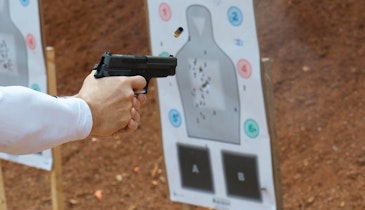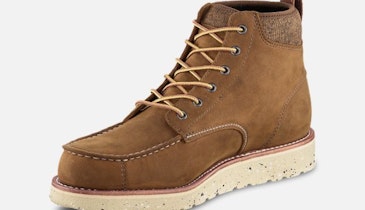One of the faster growing segments in shooting sports retailing is the world of airguns. Here, we’re talking about air soft and BB guns at the entry and recreational levels, all the way to precision pellet guns and serious hunting guns at the top levels.
As more and more states allow airguns to be used for a wider variety of game species, a whole new world of products is hitting the marketplace. Frankly, this is a subject that retailers need to embrace if they want to expand their sales because this customer base is expanding as quickly as new laws are passed to allow use of airguns in a wider array of hunts.
Airguns have been a logical part of the product mix in sporting goods retail operations all along, but some retailers haven’t taken full advantage of the traffic and revenue potential. It’s never too late to jump on the bandwagon, so to speak.
Airguns certainly are not new. They have been around since the 1700s and have been used for one form of hunting or another ever since. For example, an airgun was used during the Lewis and Clark expedition from 1804 to 1806 when the explorers headed west over then-uncharted territory to the Pacific Ocean.
Granted, until recent times, airguns were seen variously as entry-level BB guns for youngsters, pellet guns for small game, or precision air rifles for serious target competition. And that’s pretty much where airguns were positioned for generations.
When it comes to serious competition, airguns are used in Olympic competition and have been a big part of competitive shooting in Europe for decades. In the 1960s, I competed in Germany in both air rifle and air pistol, having achieved their highest ranking — translated “Big Gold,” which was a parallel to the U.S. Distinguished Master.
I evolved typically when it came to airguns. First was my Daisy Red Ryder BB gun shortly after the end of WWII, then a Benjamin pump-up .22 caliber pellet rifle in the ’50s that claimed all manner of small game and birds, and finally the serious work with a Feinwerkbau air rifle in Europe.
Now, however, there is a new pathway for shooters to follow that can either go through the traditional air soft/BB/pellet progression, or go directly to hunting and serious target air guns right from the get-go.
Estimates are that the airgun market will reach nearly $4 billion a year by 2027 and that it will grow by over 8% per year during that period. That ain’t chump change and there is no reason for any retailer to be left out of that lucrative market.
Over the past decade the airgun has really begun to come into its own as a serious hunting instrument. Airguns have been used to take everything from rabbits and deer in the U.S. to some of the dangerous game of Africa. Safari Club International has established an Air Gun method of take to its record book and World Hunting Awards programs. Participation in that program has grown exponentially during the past year.
By my count, 26 states now allow airguns for the hunting of big game, while 48 allow them for small-game hunting. Forty-seven states allow airguns for furbearers, while 45 states allow them for nuisance species. Thirteen states allow airguns for the hunting of exotic species and all but 17 states allow them for upland bird hunting.
To understand the sea change taking place on the airgun front, think way beyond BBs and pellets. Yes, they are still a big part of the airgun market, but now there are airguns that shoot what traditionally were considered big, heavy, high-performance bullets, as well as arrows.
When it comes to power, many of the big-bore airguns deliver performance very similar to traditional muzzleloaders.
Although there are growing numbers of states allowing and expanding the use of airguns for hunting, there are many restrictions that include things like minimum bore size for certain species. In other words, states are being careful to require that high-performance, potent airguns are used for the larger species. It is important to understand what all is allowed at least locally, if not nationally, to be able to advise customers better about what can work best for them.
There is something else for retailers to consider. With all the new airguns on the market comes a tidal wave of gadgets, goodies and accessories to go with them. Frankly, any of the kinds of accessories that go with regular firearms are generally applicable for airguns.
There are CO2 cartridges, as well as a host of things like compressors and compressed air tanks that are used for the pre-charged pneumatic airguns. PCP has allowed the airgun to go to new heights in recent years.
And, of course, there is the ammo. This includes BBs, pellets, bullets and arrows. Airgun projectiles go from .177 BBs and pellets to .50-caliber lead bullets that weigh 550 grains each. Considering the vast array of shapes and materials of airgun projectiles, there are a lot of SKUs to sell and the list continues to grow.
Add to that the various scopes, sights and other gear that shooters want and need, and it becomes clear that this is truly an expanding category and not some flash-in-the-pan adjunct. Not only are airguns here to stay, but they promise to be a bigger and bigger chunk of the overall shooting sports market during the coming years.
Retailers who are not already on the airgun train might consider getting aboard and riding it into the future.





